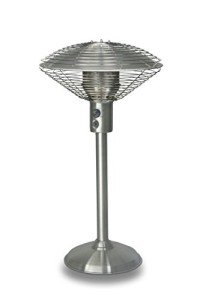Could Garden Heating Solutions Be The Key To 2025's Resolving?

Garden Heating Solutions: Enhancing Outdoor Spaces Year-Round
As seasonal changes bring varying temperatures, garden lovers deal with the challenge of preserving their treasured outdoor areas. Whether for cultivating plants, amusing guests, or simply enjoying the fresh air, garden heating solutions are crucial to optimizing pleasure and performance. This article checks out various options offered for heating gardens, including traditional and modern solutions, their advantages, and useful pointers for execution.
Comprehending the Need for Garden Heating
A well-kept garden needs to be a year-round sanctuary, providing break in both summer season and winter season. The requirement for garden heating develops from:
- Frost Protection: Certain plants, especially tender varieties, need security from frost to endure chillier months.
- Extended Growing Seasons: Heating solutions can enable for earlier planting in spring and later collecting in fall.
- Comfort Optimization: Outdoor gatherings and activities can happen more easily with regulated temperature levels.
Types of Garden Heating Solutions
Garden heating solutions can be divided into a number of classifications based upon their technology and fuel source. Here's an in-depth take a look at some popular options:
1. Electric Heaters
Electric heaters are a flexible option for smaller sized gardens and patios. Patio Heating Solutions are simple to install and run, using instant warmth with very little effort.
- Kinds Of Electric Heaters:
- Patio Heaters: Freestanding systems with a heating element that radiates warmth.
- Wall-mounted Heaters: Ideal for little areas; these heaters conserve ground space while providing heat.
- Portable Electric Fans: Great for targeted heating in specific areas.
2. Gas Heaters
Gas patio heaters are a conventional option for outdoor heating and are commonly appreciated for their efficiency and aesthetic charm.
- Kinds Of Gas Heaters:
- Propane Heaters: Easy to carry and set up, appropriate for a lot of outdoor settings.
- Natural Gas Heaters: Permanent components, perfect for places with existing natural gas lines.
3. Wood-burning Solutions
For a rustic touch, wood-burning solutions such as fire pits and chimineas add warmth and ambiance to gardens.
- Advantages and disadvantages of Wood-burning Heating:
- Advantages: Aesthetic appeal, social environment, and reliable heat circulation.
- Disadvantages: Requires more upkeep, management of ashes, and potential fire hazards.
4. Infrared Heaters
Infrared heaters utilize infrared radiation to straight warm things, making them energy-efficient and ideal for outdoor areas.
- Benefits: Immediate heat, minimal energy loss, and viability for all weather.
5. Outdoor Heating Mats and Blankets
For smaller patio areas or particular zones in a garden, heating mats and blankets can be an ingenious service to offer an additional layer of warmth.
Factors to consider for Choosing a Heating Solution
When selecting the very best heating solution for a garden, several elements need to be examined:
- Garden Size: Larger spaces may need numerous heating sources for effective heat.
- Budget: Various options exist at various cost points. Cost-effectiveness can identify the selected technique.
- Security: Evaluate the safety functions of the heating options, especially when utilizing gas or wood-burning solutions.
- Aesthetic Appeal: Integration with garden style can boost overall visual pleasure.
Table 1: Comparison of Garden Heating Solutions
| Type | Installation | Fuel Source | Efficiency | Expense |
|---|---|---|---|---|
| Electric Heater | Easy | Electricity | Rapid/Immediate | Moderate |
| Gas Heater | Moderate | Propane/Natural | High/Effective | Moderate to High |
| Wood-burning Option | Moderate/Hard | Wood | Reliable | Low to Moderate |
| Infrared Heater | Easy | Electrical power | Immediate | Moderate to High |
| Heating Mats/Blankets | Easy | Electrical power | Targeted | Low to Moderate |
Implementing Garden Heating Solutions
To guarantee effective heating in outdoor settings, a strategic approach is necessary. Here are some practical suggestions:
- Evaluate the Layout: Consider the garden design to identify locations where heating is most needed.
- Pick Multidirectional Heaters: This will assist disperse heat more evenly across the space.
- Enhance Insulation: Utilize windbreaks (like garden walls) or heat-retaining products around the heating setup.
- Include Decor: Attractive styles of heating units can boost the garden's ambiance while supplying warmth.
- Routine Maintenance: Ensure that heaters (particularly gas and wood-burning) are preserved for ideal efficiency and safety.
Frequently Asked Questions About Garden Heating Solutions
1. How safe are electric heaters for outdoor usage?
Electric heaters created for outdoor use are typically safe when set up correctly. Always follow producer guidelines and security instructions to reduce risks.
2. Can I leave my gas heater outside throughout winter season?
While lots of gas heaters are built for endurance outdoors, it's suggested to cover them or keep them indoors to safeguard them from harsh climate condition.
3. Exist energy-efficient options for heating my garden?
Yes! Gas Heating Solutions and heating mats are particularly energy-efficient as they focus heating in particular locations instead of warming the surrounding air.
4. What are the best plants to grow in a warmed garden?
Popular options consist of tomatoes, herbs, peppers, and other tender plants that prosper in temperatures above 50 ° F (10 ° C).
Garden heating solutions profoundly improve outdoor spaces, permitting for year-round enjoyment and enhanced plant development. By comprehending the different kinds of heating options available and making informed choices based upon personal choices and specific garden conditions, garden fans can transform their outdoor areas into relaxing retreats, regardless of the season.

